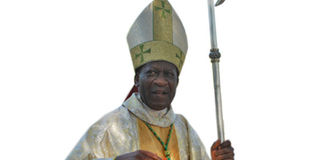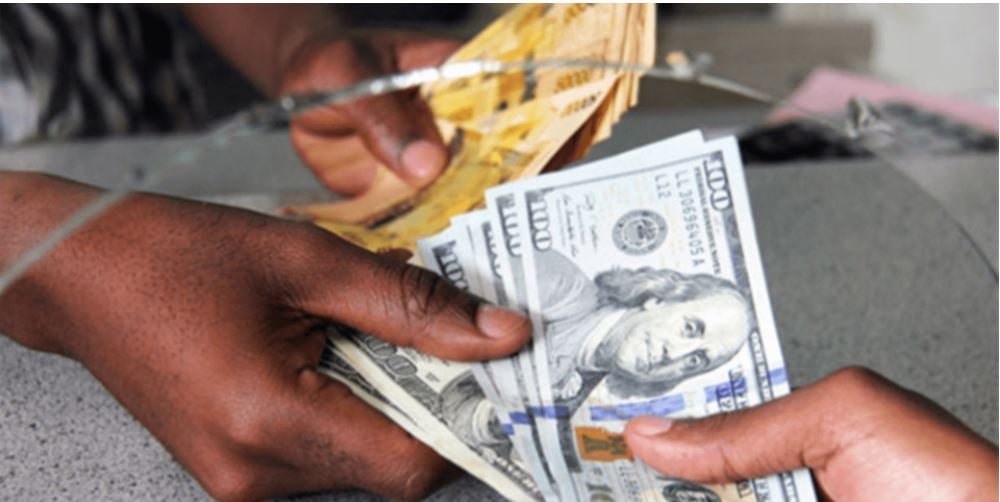Bishop Ssentongo active in retirement

Bishop emeritus of Moroto Henry Apaloryamam Ssentongo. PHOTO BY MICHAEL J. SSALI
Bishop emeritus of Moroto Diocese, Henry Apaloryamam Ssentogo, 80, lives a restful life at Bikira Catholic Parish, Masaka Diocese.
He lives with two assistants; a religious brother and a Catholic priest and a few house-helps in an old, well-maintained building.
“I have a painful backbone and I’m not fit for active priestly work. I spend most of my time reading and resting,” he said.
“However, recently I began visiting sub-parishes under Bikira Parish on Sundays celebrating Mass and preaching. Once in a while I travel to Kampala for medical treatment and to attend to a few meetings.”
Even in retirement he still holds some responsibilities. He is a member of the board of trustees of Joint Medical Store, Nsambya, Kampala, and member of the board of directors of Pax Insurance Ltd, Kampala.
“I’m here not as bishop but as someone undergoing recuperation. I’m grateful to my brother, Bishop John Baptist Kaggwa for offering me this house and even rehabilitating it before I occupied it.”
Inspiration
Bishop Ssentogo attended Kalungu Primary School and Villa Maria Primary School before joining Bukalasa Seminary.
“Not far from our home is Kasabbaale Hill which served as a holiday resort for the seminarians from Bukalasa. As children, we admired them and we were impressed by their kindness. We were also allowed to attend Sunday Mass at their chapel and whenever we returned home we would imitate the priest saying Mass.
Then, I decided to become a priest.” His parents, John Lukwago Lule and Maria Nakibuuka were supportive as they promptly paid his school fees. They were coffee farmers who lived in Kisaawa Village.
Also, his uncle, Fr Clement Kiggundu, formerly editor of Munno newspaper, inspired him to join religious life.
“Fr Kiggundu, my paternal uncle is one of those people I looked up to. He encouraged me to become a priest.”
School and work
After Bukalasa Seminary, Ssentongo joined Katigondo Major Seminary for one and half years before he was offered a scholarship to Urban University in Rome in 1957. He was ordained on December 21, 1963.
He pursued further studies in Switzerland and Germany where he earned Masters of Philosophy, Theology, and in Law. No wonder, he is fluent in German, English, and Italian besides Luganda, his mother tongue.
He returned to Uganda in 1969 and was appointed curate at Matale Parish, Masaka Diocese before being appointed private secretary to the Apostolic Nuncio to Uganda. Between 1976 and 1980 he was rector of Bukalasa Seminary.
From 1981 to 1988 he served as Secretary general of the uganda Episcopal Conference and a year later was ordained auxiliary bishop of Masaka Diocese where he served for three years and he was appointed Moroto Diocese bishop.
In Moroto
He has fond memories of Moroto where he served up to 2014.
“The Karimojong people are friendly. One day, they chatted me up and gave me the name Apaloryamam which I formally adopted. It means a cow with horns bent inwards. It symbolises friendship, love, and togetherness,” he says, adding, that he had to work hard and keep values of his name.
Of the priests he was trained with; Rev Fr Francis Sales Muwonge of Matale Parish in Masaka Diocese and Rev Fr Joseph Ssegujja in Kampala Diocese are still alive.
Asked why training of Catholic priests takes many years, Bishop Ssentongo replied, “The Catholic Church requires that priests must be educated up to the highest level of the country in which they serve.
Today, we have university graduates to whom we preach and they approach priests for guidance. The priest should therefore be of similar if not higher educational level.”
He is cheerful and lives a truly busy life of service above self and enjoys talking to visitors.
On defiant priests
With regard to the trend of some Catholic priests defying the authority of their bishops and others not observing their celibacy vows, Bishop Ssentongo advises, “It must not be only the responsibility of the seminary to judge which young man deserves to become a priest.
The Christian community from which he comes should be given more opportunity to give their views about the suitability of the aspirant.”
On priestly dress code
On why most Catholic priests do not wear cassocks or clerical shirts lately, Bishop Ssentongo says, “It is a dangerous trend that should be addressed. People should be able to easily identify a priest by the way he dresses. Some are disobedient to their bishop’s orders while others pursue material wealth.”
He concludes that priests should be trained and prepared to live simple lives.




